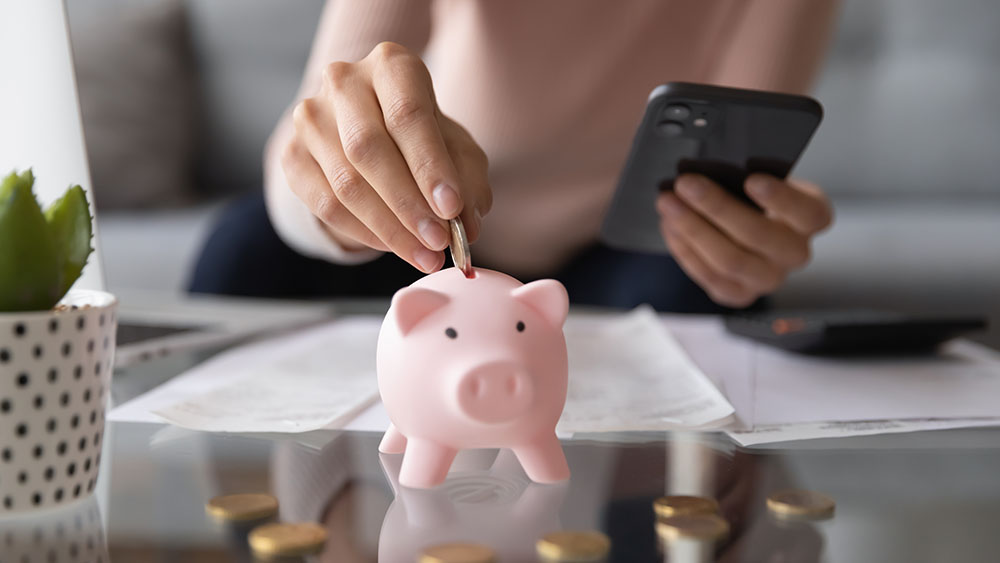According to a report in The Economic Times published a year ago, female users spent an average of two hours per month on finance apps. However, what the survey didn’t tell us was how many women actually use these apps. LXME, a financial platform for women, conducted a survey in association with Axis My India and found that a staggering 92 per cent of women (across metros, Tier II, and Tier III cities) actually do not use financial websites or apps on a regular basis.
“There are many digital platforms that are geared specifically towards women and their needs, but a relatively small percentage of Indian women are actually aware of them or use them effectively,” says New Delhi-based private banker Kunal Shah. “Mahila Money is a digital platform geared towards women entrepreneurs, which provides them with micro-loans and financial literacy. Since it is a women-only online community, it is usually considered a safe space for women to learn and grow. Another is LXME, which provides women with enough knowledge to enable them to take their own financial decisions. It educates them about everything from mutual funds to stocks, giving women the power to rely on their own judgement and wisdom, rather than that of their fathers or brothers, or husbands.
“Then there is Basis, which aims to bridge the knowledge gaps that women face in finance. It also offers India’s first prepaid card solely for women, which allows them to spend online with cashbacks and rewards. What’s interesting is that a lot of these apps and digital platforms are run by women, so they’re authentic in terms of catering to women’s needs.”
While few women use financial apps for investments and money management, the pandemic accelerated urban women’s need for cashless payments. According to a survey by YouGov, more than six out of 10 women who use digital payment modes use them on a regular basis. Slightly over one-fifth began using them during the pandemic.
Convenience is the single major reason that 81 per cent of women cited for using digital payment modes. The second most popular reason that 70 per cent of women cited are rewards, cashback, and promotional offers. Digital payment modes allow them to record their payments and keep track, said 68 per cent of the women. As for usage, digital payment modes are used for mobile recharges (89 per cent), delivery services (77 per cent), utility bills (76 per cent), shopping bills (69 per cent), fund transfers (62 per cent), travel and leisure bookings (50 per cent) and toll payments (32 percent).

Says Malati Mondal, a 46-year-old corporate employee, who lives away from her family, “I help my family financially, and therefore need to transfer funds to them on a regular basis. In the days before the pandemic, I would go to the bank and deposit a cheque. However, Covid-19 put a stop to that. That’s when I discovered Google Pay. It has become much easier to transfer money now, and even though things have opened up, I don’t see myself going back to the old way of visiting the bank. Although I was sceptical at first, because you hear of online frauds, I realised that by taking adequate steps to ensure safety, we can safeguard against these. I’ve also started using digital payments for my gas payments and other utilities of late, and it’s changed my life for the better.”
According to YouGov’s survey, Google Pay emerged as the top choice among females in India, with 43 per cent using it, followed by Paytm at 30 per cent. Other apps like PhonePe, Amazon Pay, and BHIM are used, but in smaller numbers. What is interesting to note is that Gen Z is more likely to use PhonePe, while Gen X prefers Amazon Pay or BHIM.
Mariam AR, a chef in a large luxury hotel chain, started investing and trading with IIFL a couple of years ago, parking small sums of money in holdings and mutual funds. “Using the IIFL app, I am able to make transactions on my own, without third-party intervention. I can also keep tabs on my investments on a minute-to-minute basis, plus receive all the latest news and updates in the market. It’s been empowering. I’d recommend that every woman looks at some SIP or stock options, and downloads the concerned app to help her manage and monitor them on her own.”
“Although things are on an upward swing, particularly in urban India, there is still a large gap between men and women who use technology for financial purposes,” says Kunal. “This gap boils down to one major factor – lack of education and awareness. With so many financial products available online now, literacy on how to use these products and their benefits is important. My advice to women is to keep reading, learning, and updating your own financial skills, so that you can take charge of your own money -- the way you spend and invest it.”
Whether it’s keeping track of personal finances, tips for saving and borrowing, communities where women can share financial experiences, or stock performance updates, women now have access to a wide range of financial products and services. All they need to do is harness and use these resources effectively. Perhaps no one has expressed it better than Linda Davis Taylor, CEO and Chairman of Clifford Swan Investment Counselors, “ “Give a woman a dollar, and she can put it to good use. Teach her about how money really works, and she can change the world.”